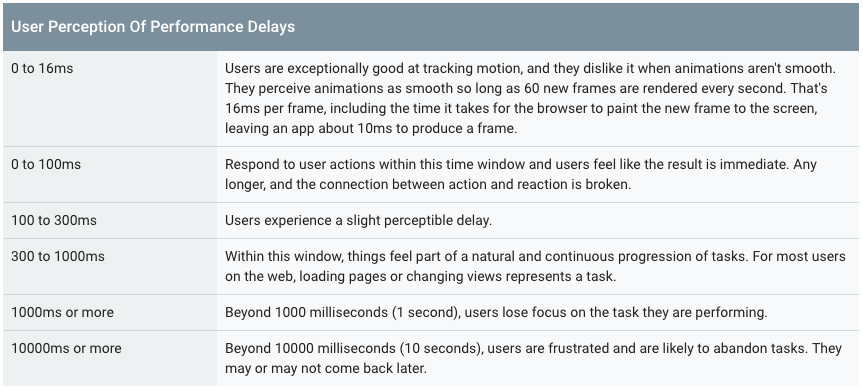7 Ways To Improve Your Customer Experience
Eventually, every product or service category becomes a commodity
The result of the inevitable maturing of markets is that today’s innovation becomes tomorrow’s fish and chip paper, so to speak. And as the hyper-connected environment of the internet empowers your customers to price compare among a virtually infinite set of your competitors, this process will only continue to accelerate. But just because the category itself is commoditized, there is still competitive advantage to be found in the customer experience you build around the transaction. So, let’s look at some of the quickest ways you can diagnose any issues, avoid common pitfalls and improve your customer experience.
1. Survey your customers
Assuming you have an established mailing list for your customers, set aside part of your outreach schedule to survey them about their experiences. If you have the budget, conduct focus groups or one-on-one user testing sessions. The most useful topics of inquiry are generally surrounding points of friction in the user journey. Ask them about what’s working, what could work better, and what’s not working at all. Observe their navigation patterns and choices.Watch for the big issues, sure, but more importantly, watch for the micro-moments, the hesitations that interrupt the journey ever so slightly. It’s not always the big hiccups that depress your conversions, but the aggregation of a number of small pain points spread across the total population of your customers’ base can add up. In the end, it always pays to actively listen to your customers. It’s rare that customers can tell you the best ways to fix their pain points, but they are great at telling you what those pain points are and why they are annoyed by them.
2. Survey non-customers
If you don’t already have access to a mailing list of non-customers, this group may be a bit harder to engage. But any business seeking to increase market penetration would be well served by knowing what about the experience of engaging with your business is ultimately undesirable, or at least not desirable enough to overcome the switching costs.
3. Make sure contact information is up-to-date and easily accessible
If anyone asks how to get ahold of your customer support, you’ve already failed. It’s frustrating to search a site, fruitlessly, for contact information. Worse yet is finding contact information and attempting to use it, only to find a disconnected line or an unmonitored “catch-all” email account. Place contact information on every page, and the more avenues of communication available (e.g.: email, phone, twitter, et al), the better.
4. Prioritize and minimize available actions
When considering any information architecture or user experience design challenge, there is always a fine line between simplicity and obfuscation. Knowing where that line actually lies needn’t rely on guesswork, however. This is a perfect use case for a systematic A/B testing or conversion rate optimization (CRO). Create iterations of the page or screen in question and test the variants for effectiveness. You should be able to uncover what level of information delivers the most positive impact on KPI levels.
5. Focus on load times
While it seems like a performance issue, optimizing load times is really about keeping the user happy. Google has an interesting framework for evaluating the experience surrounding load times called RAIL. The idea is that the longer the load time, the greater the frustration and decrease in focus on the task at hand.
Delay & User Reaction
 Source: https://developers.google.com/web/fundamentals/performance/rail
Source: https://developers.google.com/web/fundamentals/performance/rail
6. Mobile first. Seriously.
The rationales for not replacing or updating non-responsive legacy web properties usually sound reasonable: “We’re a B2B company. Our customers don’t need mobile.” Or, “Who would make a major industrial purchase from their phone?” But dive into the analytics of any site and the volume of traffic originating from mobile devices is likely to be well over 50%. Regardless of how we imagine any customer’s work day, their browsing habits are created and reinforced by their habits in and out of work. And, for most people, that means using their mobile device to fill any idle moment—whether that’s work, pleasure or some jumbled mashup of the two. They don’t distinguish between dayparts or environments when seeking information, and if your experience doesn’t address their needs, whenever, wherever, they choose to enter it, they will move on.
7. Improve on your competitors’ best UX ideas
Legendary Apple co-founder and CEO Steve Jobs is oft quoted as saying, “A good artist borrows. A great artist steals.” Amusingly, he seems to have stolen the phrase from Picasso, who likely lifted it from the annals of history. The point here is that you should be looking at your competitors’ customer experiences at least as frequently as your customers and potential customers are. Create an incognito browser window and take the user journey yourself—yours and your competitors—from search up to the moment of conversion. Take time to formally document and compare your user journey to that of your most successful and least successful competitors. Make a list of the most useful features and designs and look for ways to optimize your own experience based on those models. Imagine the perfect user journey and compare it to the journey you’re offering. If there’s a gap, choose the best ideas, from anywhere you can, to fix it.
Ultimately, experience is brand and brand is experience.
In marketing journals and blogs across the internet, you’ll see stories about the death of brands. Or, that brands don’t matter. But it is probably more fair to say that what defines a brand today is less the logo, typeface, slogan or ad campaign than it is the experience the user associates with it. And that is where you’ll create your next market advantage.
